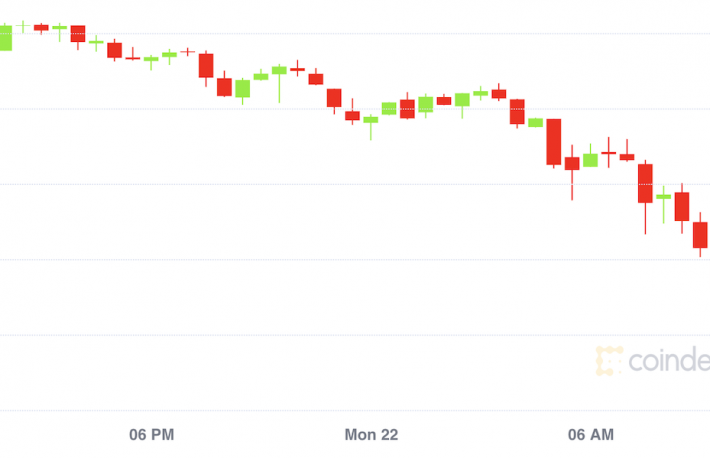The price of bitcoin (BTC, -5.86%), the largest cryptocurrency, tumbled 7.6% to about $52,800. It was the biggest decline in a month and trimmed the year-to-date gain to about 83%.
Some 40,000 BTC ($2.1 billion worth) have been transferred to exchanges since Friday on major crypto exchanges, pushing up the bitcoin reserves to levels not seen since the end of January, according to data from blockchain analytics firm Glassnode.
Ki Young Ju, CEO of South Korea-based crypto data firm CryptoQuant, told CoinDesk that the bitcoin inflow mostly went to the U.S-based Gemini, which saw some 34,000 BTC come in before Monday’s market sell-off.
The blockchain data appear to show a flow of about 28,000 BTC to Gemini around 2 p.m. New York time (19:00 UTC) on Sunday, right around the time the cryptocurrency’s price reached the $58,000 level, according to CryptoQuant.
Monday’s price slide coincided with Treasury Secretary Janet Yellen’s comments at the New York Times’s DealBook DC Policy Project that bitcoin is not widely used as a “transaction mechanism.”
The cryptocurrency represents an “extremely inefficient way” of conducting transactions, Yellen said, and “the amount of energy that’s consumed in processing those transactions is staggering.”
If bitcoin breaks below $50,000, it might then fall to a range of $40,000 to $42,000 before finding a new technical support level on price charts, Singapore-based QCP Capital said Monday on its Telegram broadcast channel.
“We have $54,000 as the first trendline support, a break of which will take us to $50,000, which is the stronger second trend-line support,” QCP Capital wrote. “Forced retail liquidations could take us to test the $40,000-$42,000, which is the hedge fund trading level corresponding to the parabolic trendline.”
“The $40,000 level needs to hold “to preserve the strong bullish momentum,” QCP added.





